Last Updated on: 5th December 2020, 09:55 am
Lake Sevan and Dilijan are some of Armenia’s most popular weekend getaways. But what about visiting both in a single day? If relaxation is your goal, don’t bother. But if you’re hoping to get a glimpse of the region’s gorgeous scenery and visit a few impressive monasteries, one full day is plenty. And if you’re lucky, you may even get to throw in a bit of hiking.
I originally planned to visit Sevan and Dilijan on my own, but ultimately found it much easier and cheaper to go as part of a day tour. Learn more about transportation down below.
Lake Sevan
Located in the country’s Gegharkunik region, Lake Sevan, which takes up an area of around 1240 km², is by far Armenia’s largest lake. As Armenia is a small landlocked country, Sevan is the only option for those who want to relax at the beach or play water sports.
Sevan, therefore, is often hyped up by locals as a ‘must-visit’ destination. But for foreign visitors who come from countries with a coast, it’s, well, just a lake. Nevertheless, it’s indeed a beautiful lake that’s worth at least stopping by. And one of the best places from which to view it is the ancient Sevanavank Monastery.
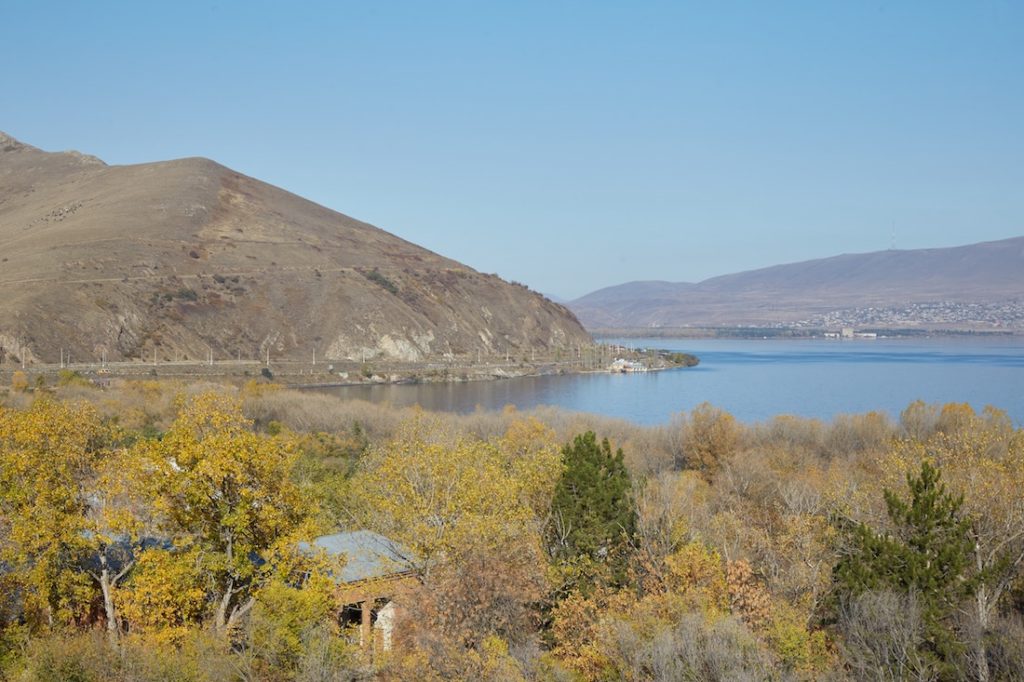

Sevanavank can be accessed by a fairly easy hike up some steps beginning near the parking lot. As is the case with many smaller churches in Armenia, the highlight of Sevanavank isn’t the architecture itself, but the stunning views it offers of the surrounding scenery.
The site on which the church stands is full of history. Like most other ancient churches in Armenia, the land was once home to a ‘pagan’ temple before it was demolished by the early Christians in the 4th century AD. And over the next thousand years or so, it was destroyed and rebuilt a great number of times.



Currently, Sevanavank Monastery consists of two small churches, the larger of them being called St. Arakelots. While I’d seen countless other Armenian churches by this point in my travels, I never tire of stepping inside to soak up the mysterious, dark and smoky atmosphere.
I was lucky to get to St. Arakelots just as a group was leaving, and I spent a few minutes inside before exploring the rest of the area.

Outside, visitors can see the ruins of various other structures. Much of the original church was destroyed in a 10th-century earthquake. And though it was rebuilt, it was eventually demolished again by the Timurid Empire.
It was then restored and rebuilt in 1661 before being destroyed in the 1930s. Finally, it was renovated yet again in the 1950s.
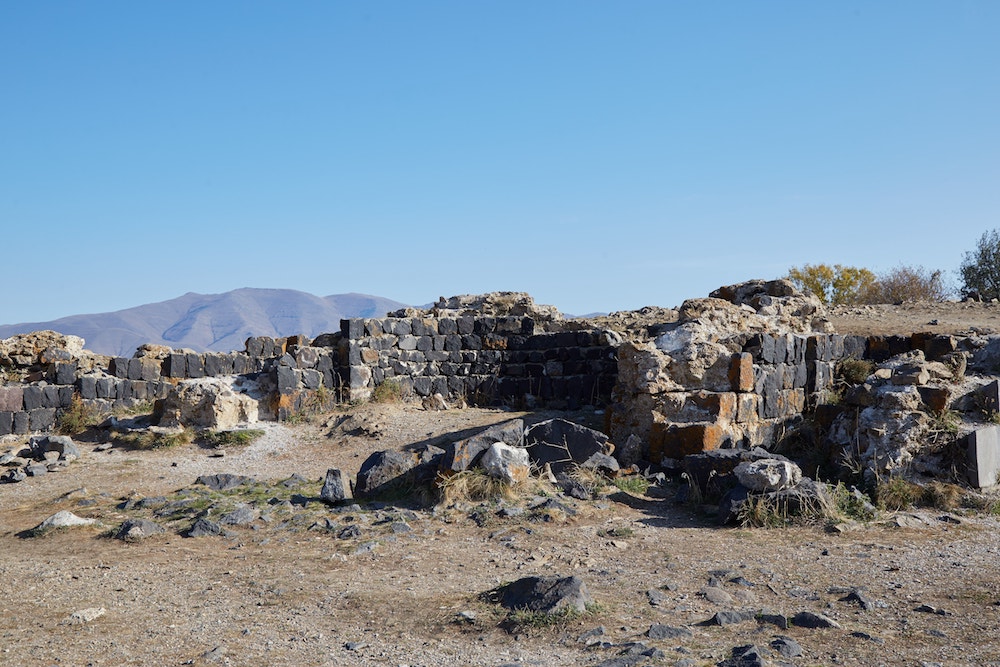
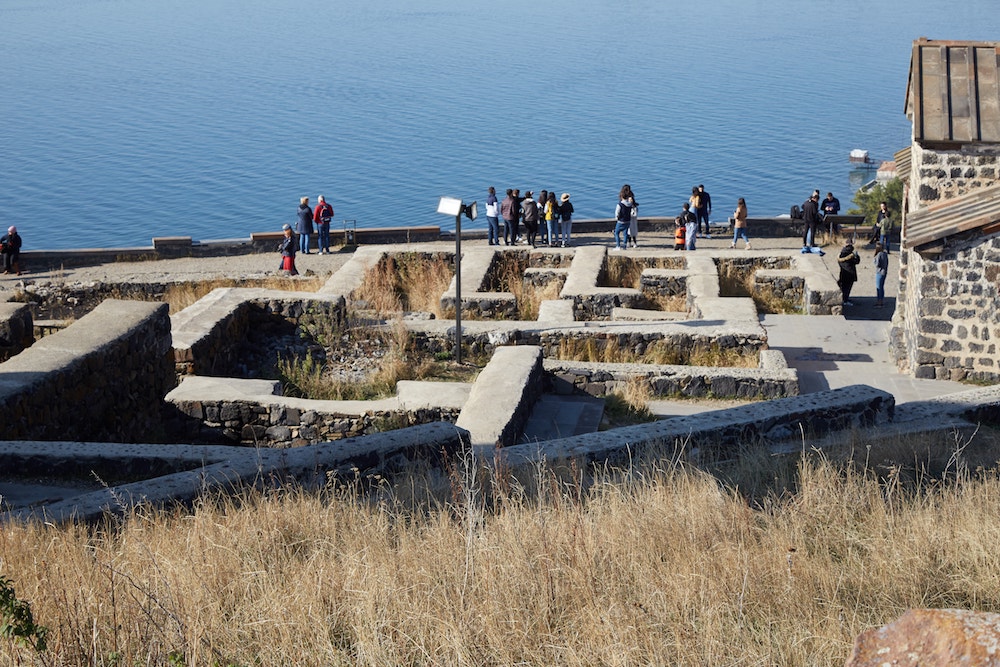
Past the church, there’s a little trail visitors can continue walking down. While it offers more great views of Lake Sevan, the trail ultimately leads to nothing. And so I decided to return and head back to the bus.


There are plenty more cultural sites to see around Lake Sevan. Heading south along the lake, you can visit another monastery called Hayravank and an ancient cemetery called Noratus, known for its innumerable kachkar stones. The southern shore, meanwhile, contains an archaeological site called Odzaberd which dates back to the Urartian period.
Originally, I’d hoped to visit Sevan independently to explore them, but didn’t end up having the time.
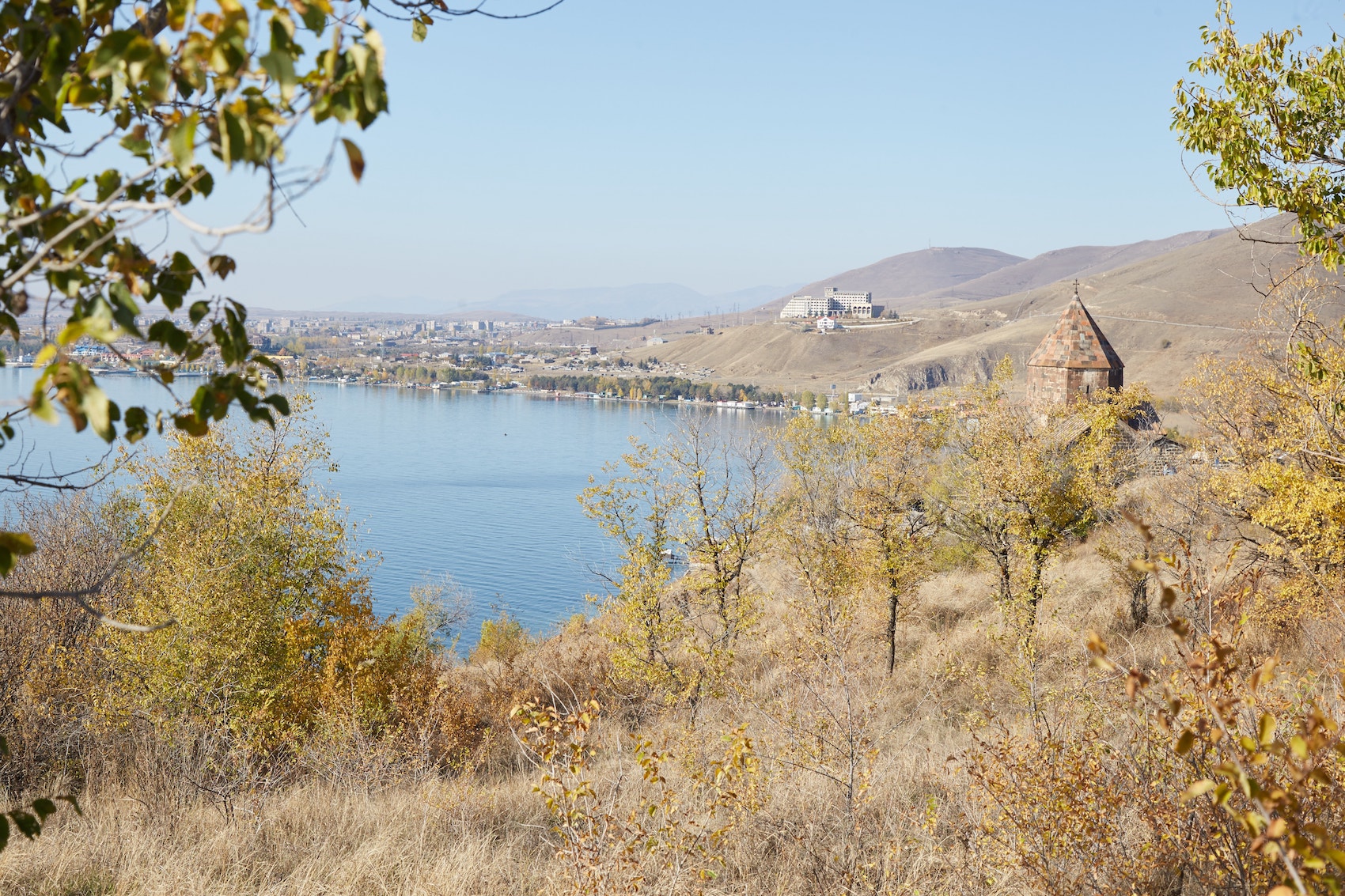
Parz Lake
Next, we headed to the scenic Dilijan region where we’d be spending the remainder of the day. And our first stop was yet another lake, albeit much smaller this time.
As we’d have over an hour to hang out around Parz Lake, I didn’t hesitate to find the nearest hiking trail.
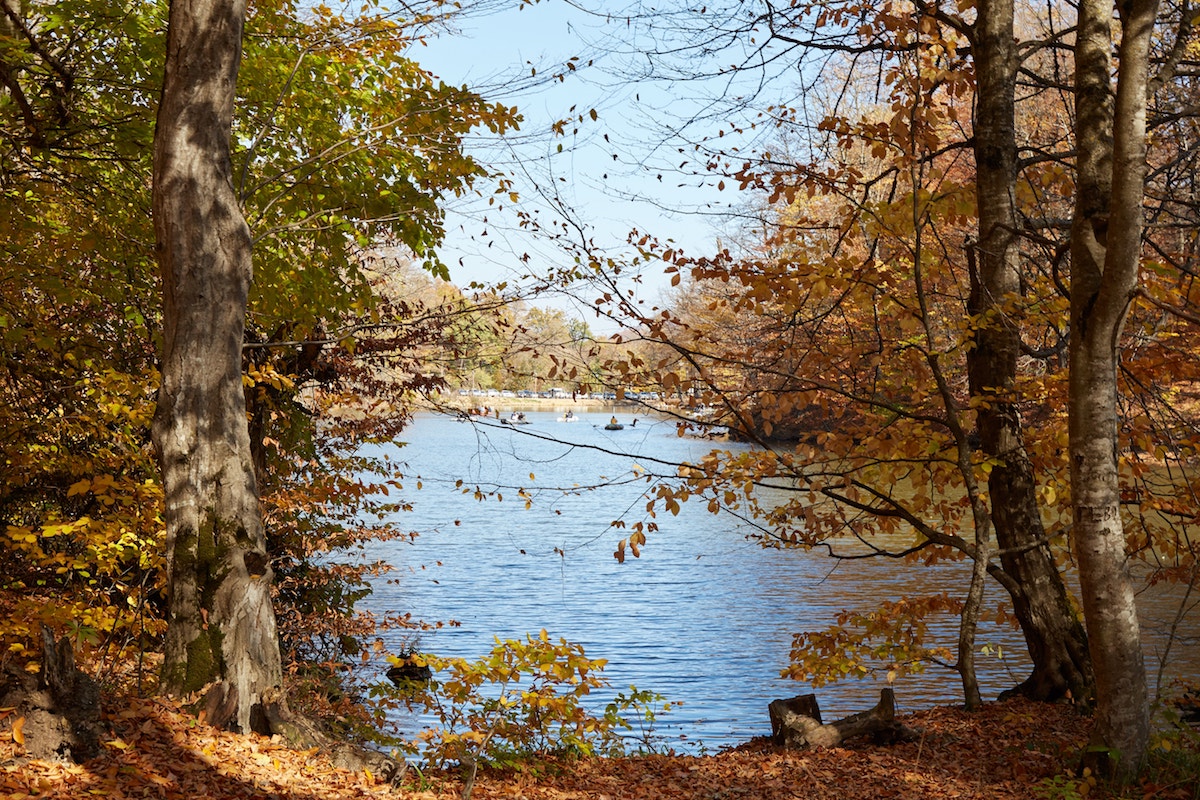
There are a few different trails in the area, but I chose the loop trail around the lake. While a sign at the site estimates that it takes an hour and fifteen minutes, I walked the whole thing at a leisurely pace and finished in 45 minutes.
Be sure to download the Maps.me app before your visit which marks the entire loop trail. Without it, it’s easy to get the start of the loop confused with an entirely different trail.
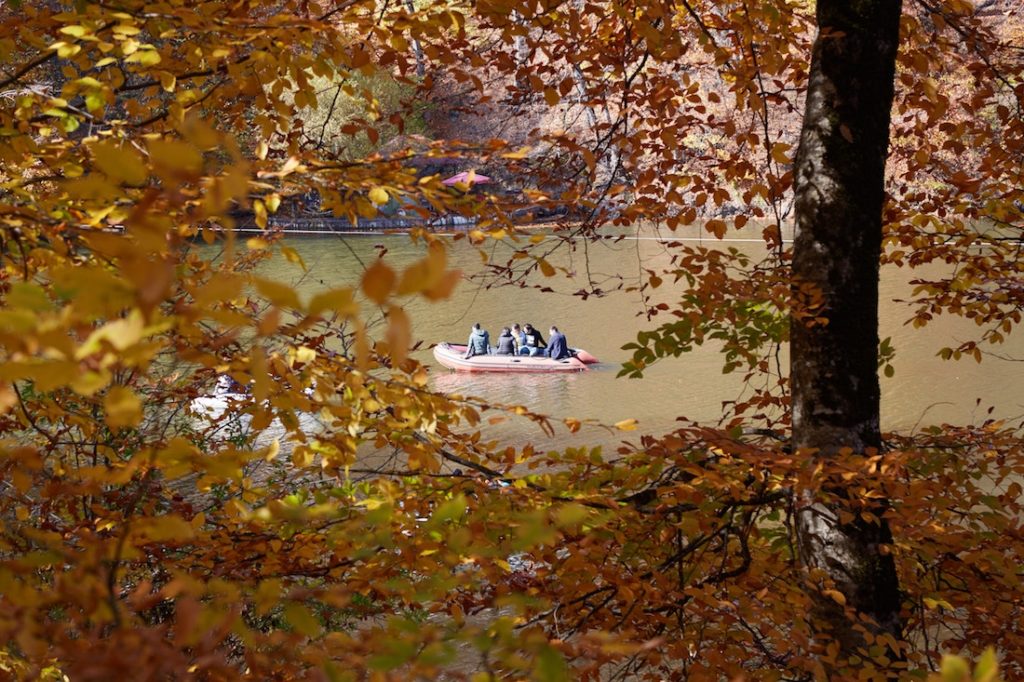
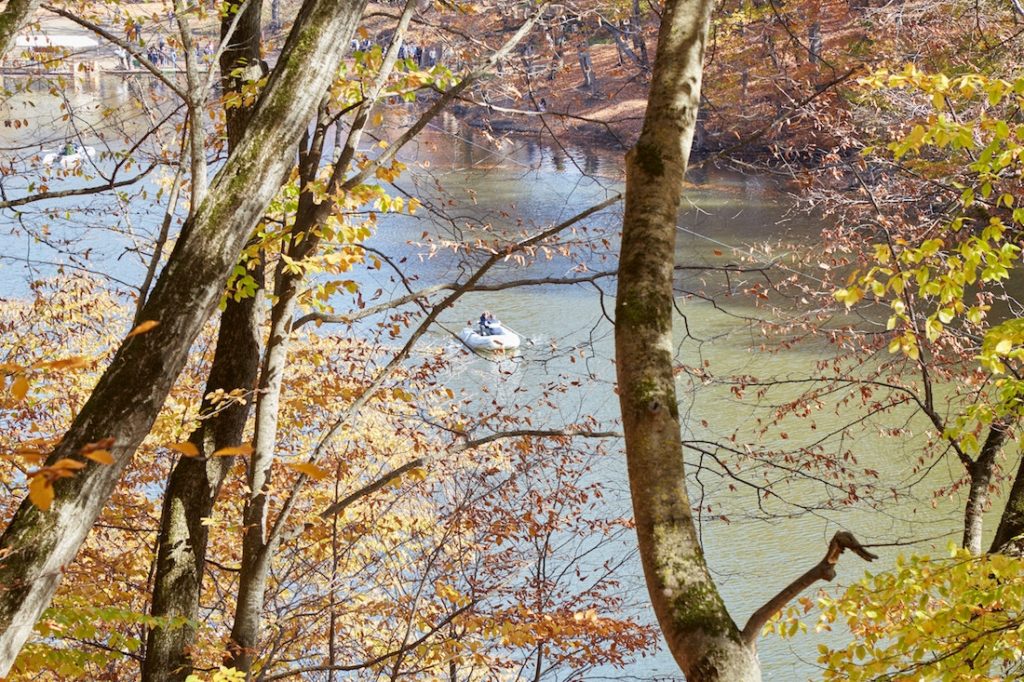
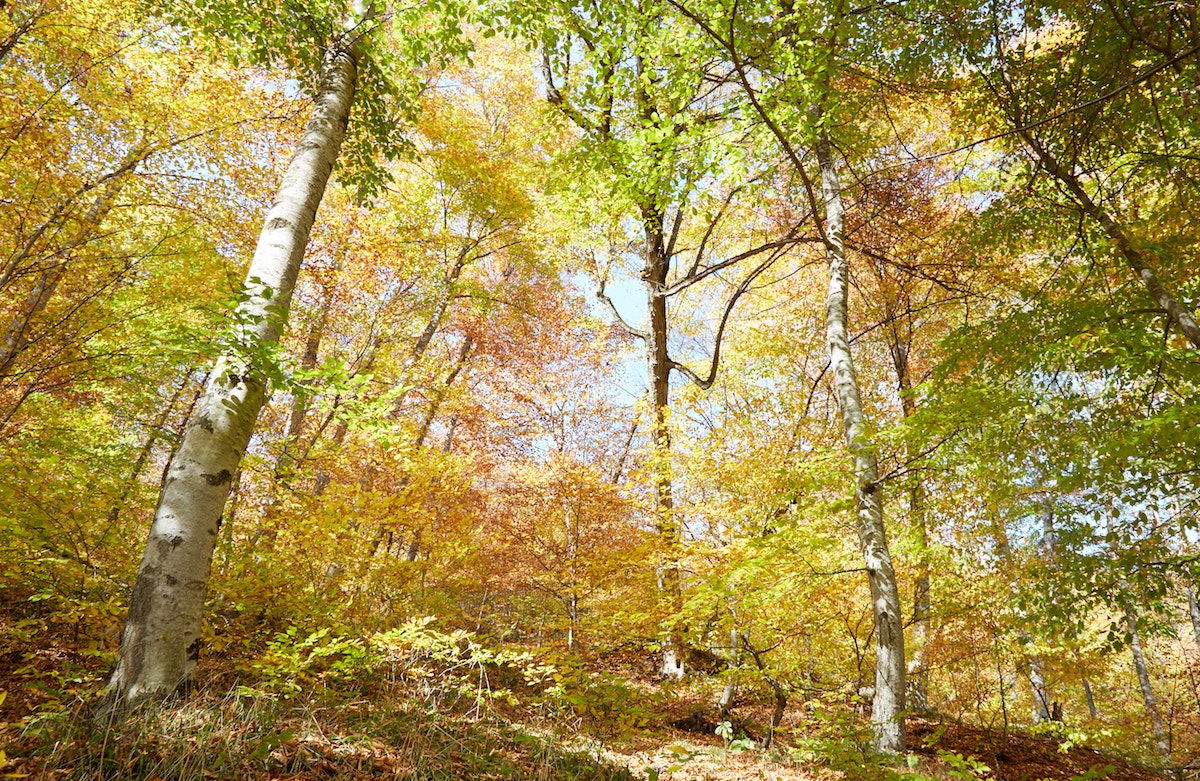
The lake remains visible for most of the peaceful walk. But despite the number of people boating in the lake or having picnics nearby, I didn’t encounter any other hikers along the trail .
The trail consisted of a few uphill portions, but nothing too extreme. Near the end of the walk, the lake was out of view and I found myself in the middle of a thick, dense, forest. Eventually, though, I saw the main road over to my right and walked downhill to get there.
Arriving right where I started, I still had another twenty minutes or so to explore. I tried one of the alternative paths, making sure to check the time so I wouldn’t miss the bus.
This was merely a brief preview of all the hiking there is to do in Dilijan National Park, which occupies an area of 240 km². And many of the trails take hikers to ancient monasteries situated deep in the forest. Furthermore, Dilijan is home to a sizable portion of the Transcaucasian Trail which runs through both Armenia and Georgia.
Originally planning to visit Dilijan on my own, my plan was to hike to Jukhtavank or Aghavnavank monasteries in addition to hiring a cab to the more famous ones I’d see on the tour. But after learning that the last marshrutka back to Yerevan leaves at 4pm, I nixed the plan entirely and joined the group tour.
Anyway, Dilijan National Park seems to be the type of place that takes a number of days to appreciate. I met one traveler who spent several days in the area, taking a different scenic hike each day. If I come back to Armenia someday, Dilijan is where I hope to spend a good chunk of my time.



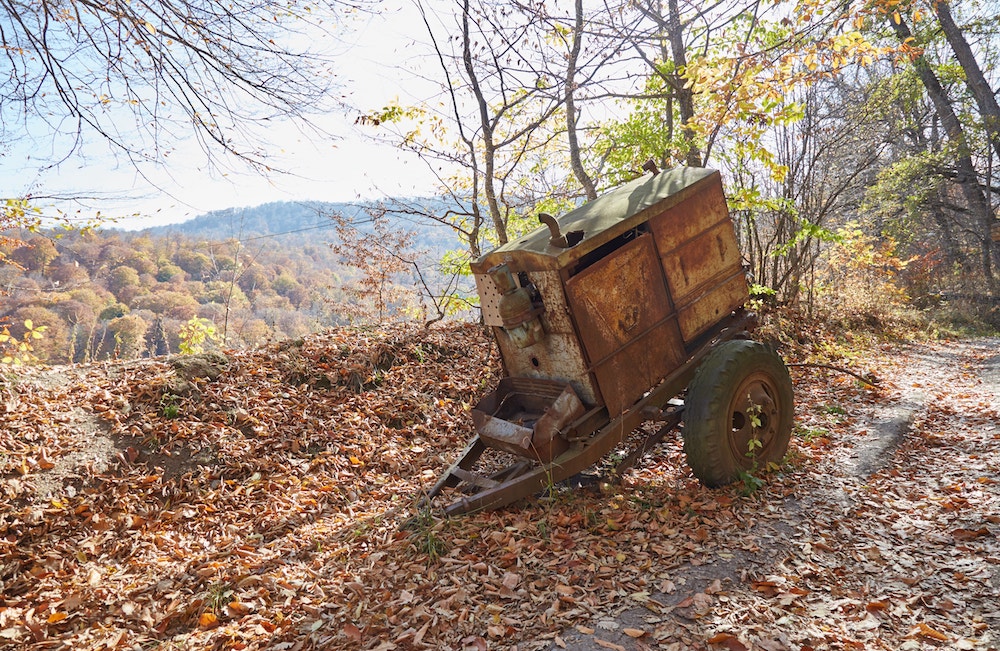
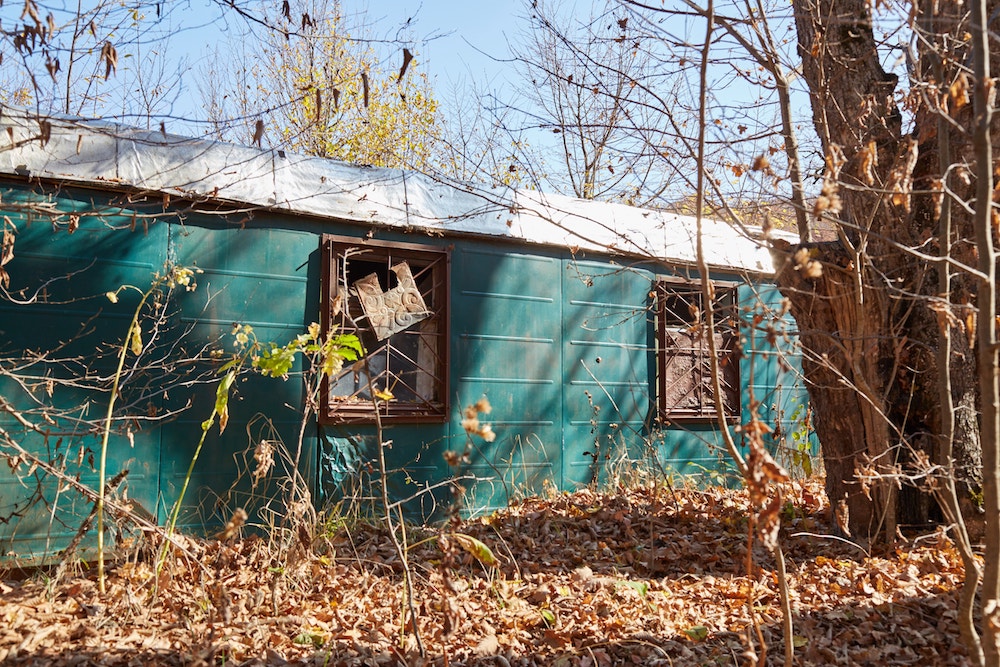
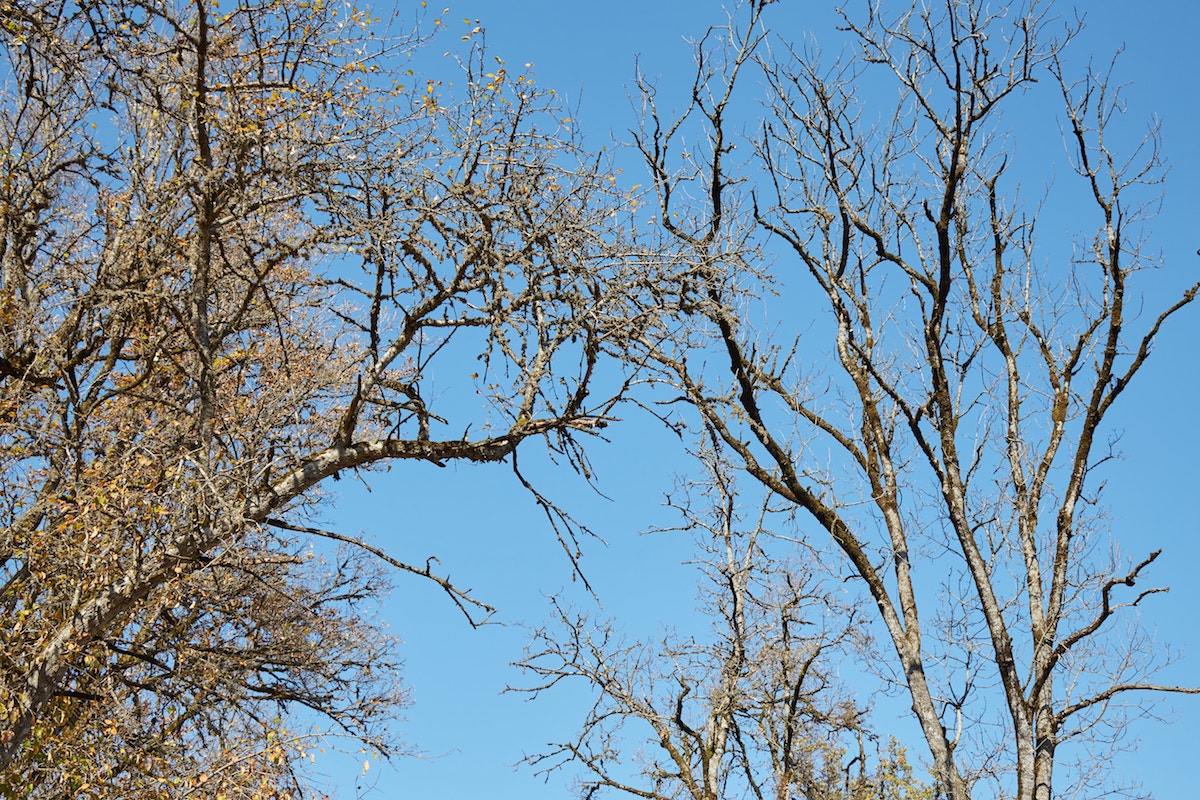
Goshavank Monastery
Our next stop was one of two of the Dilijan area’s main monasteries: Goshavank. Located in the village of Gosh, directly north of Lake Sevan, Goshavank Monastery dates back to the 12th century.
Most of the main churches, however, were constructed in the 13th century after the originals were destroyed in an earthquake.
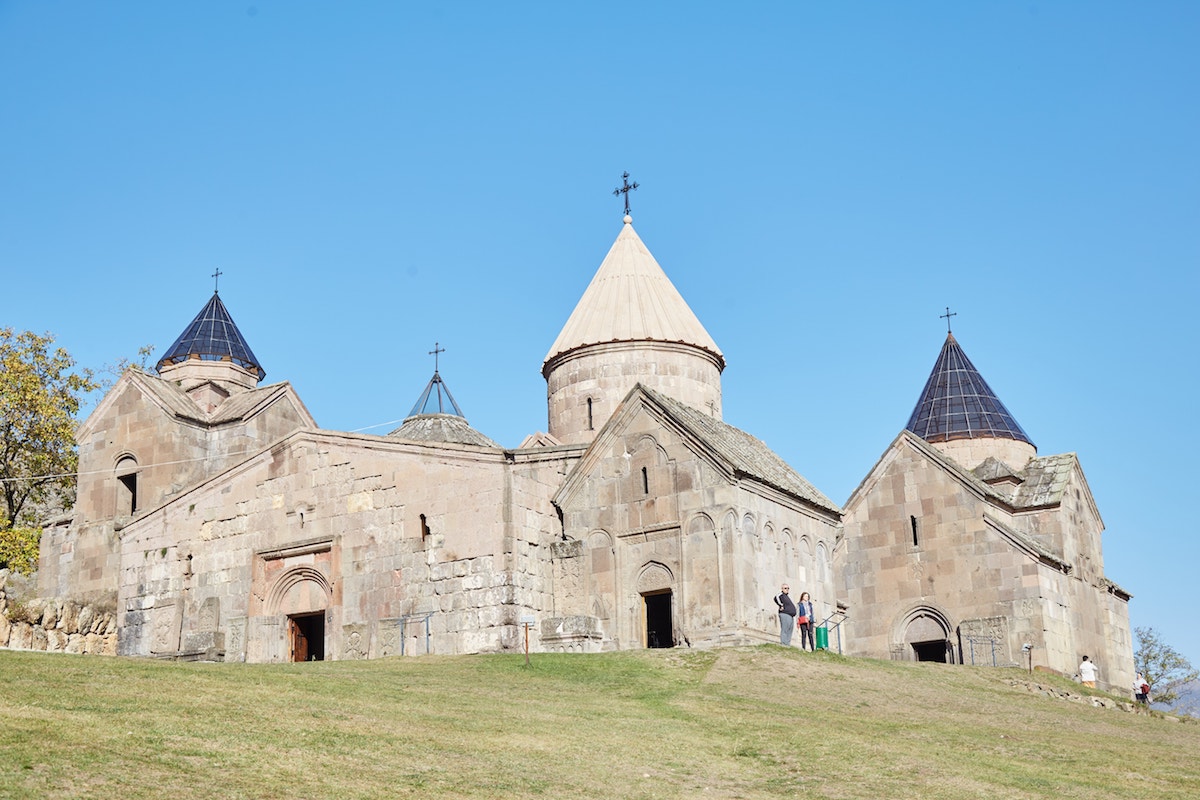
And some of the damage can still be seen today. The walls surrounding the former refectory only stand to a fraction of their original height. The space, now an empty courtyard, appears to act as a cemetery for broken kachkar cross-stones.


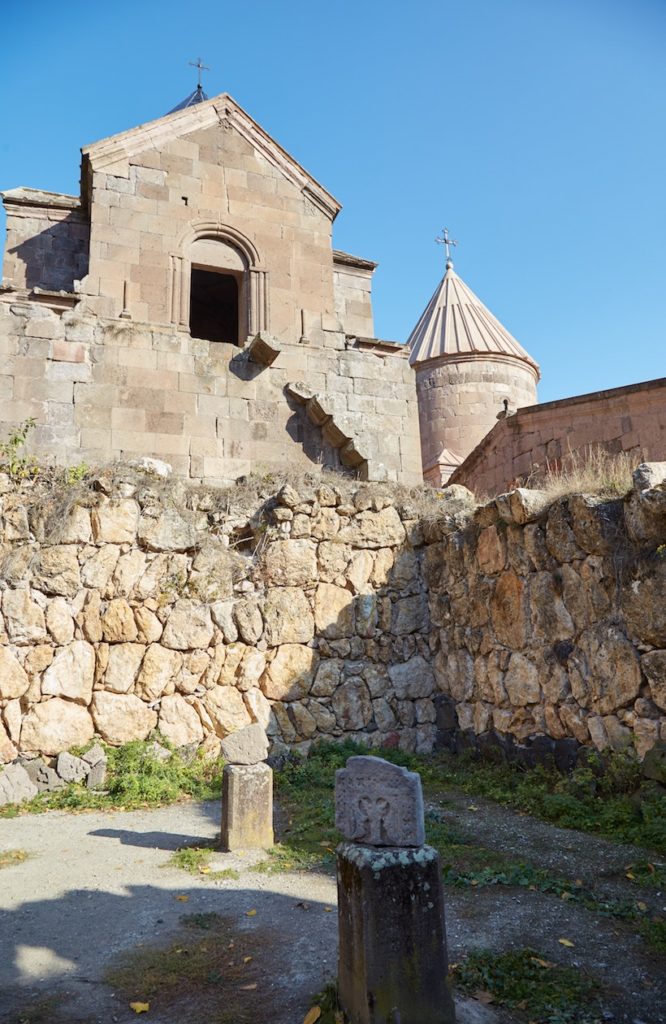
Something else you’ll notice in front of the monastery is a statue of Mkhitar Gosh, the monastery’s founder. This important historical figure was both a writer and a monk.
Gosh wrote law codes which were utilized not only in Armenia but in other European countries as well. Supposedly, he did this in response to Islamic Sharia law which was gaining traction throughout the region at the time.
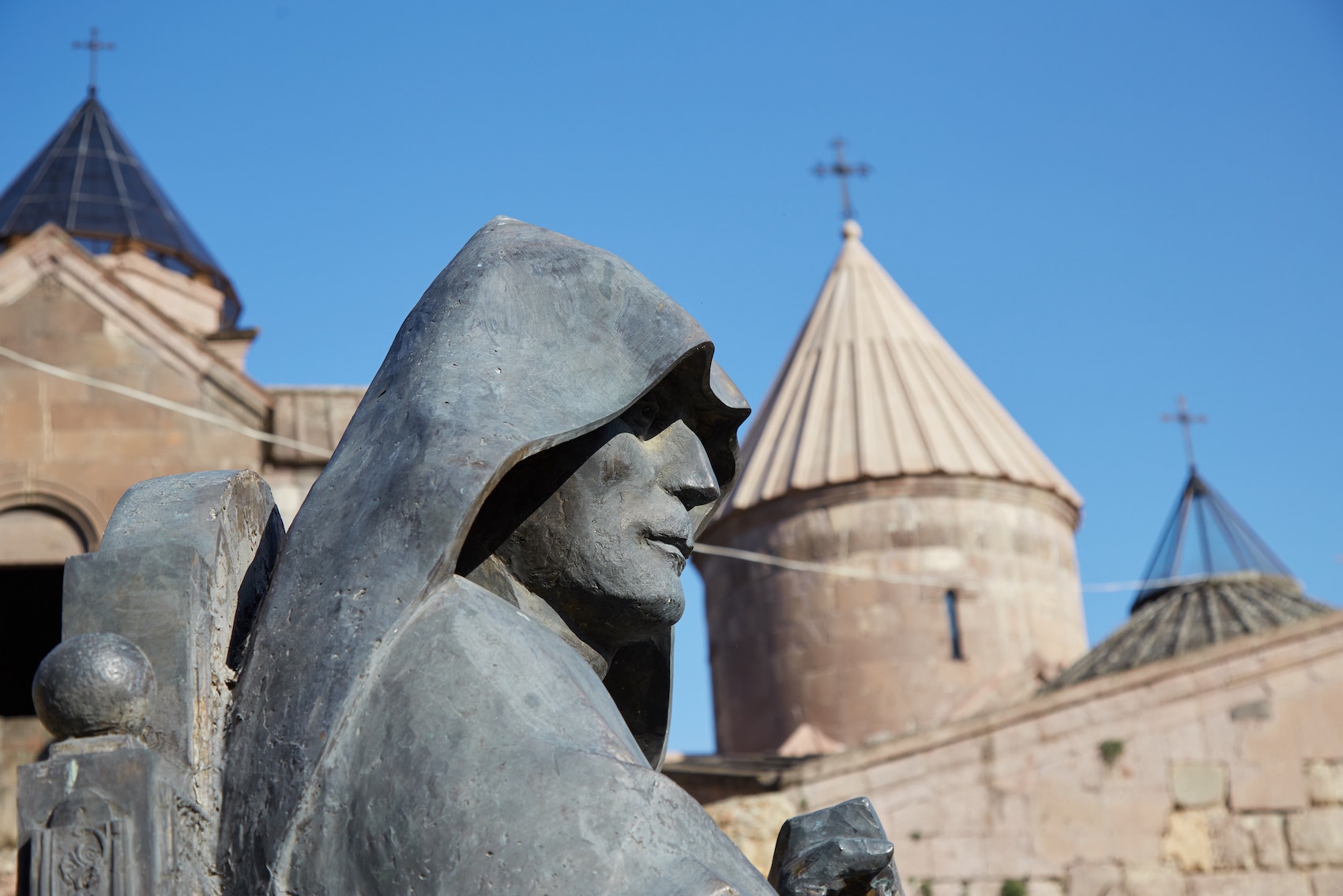
The first doorway you’ll encounter leads to the large gavit of the main church. It contains large columns in addition to the graves of feudal lords who helped fund Goshavank Monastery over the years.
The monastery’s main church, St. Astvatsin (Holy Mother of God), features a large domed hall. Looking up, you’ll notice that the dome is a modern glass reconstruction which allows for plenty of natural light to pass through.

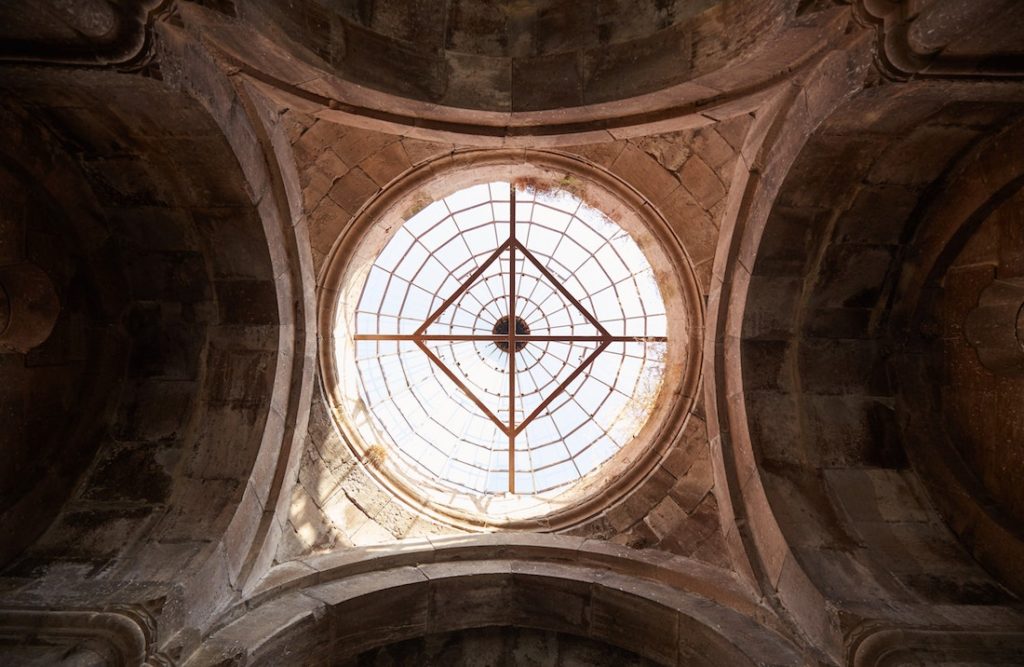
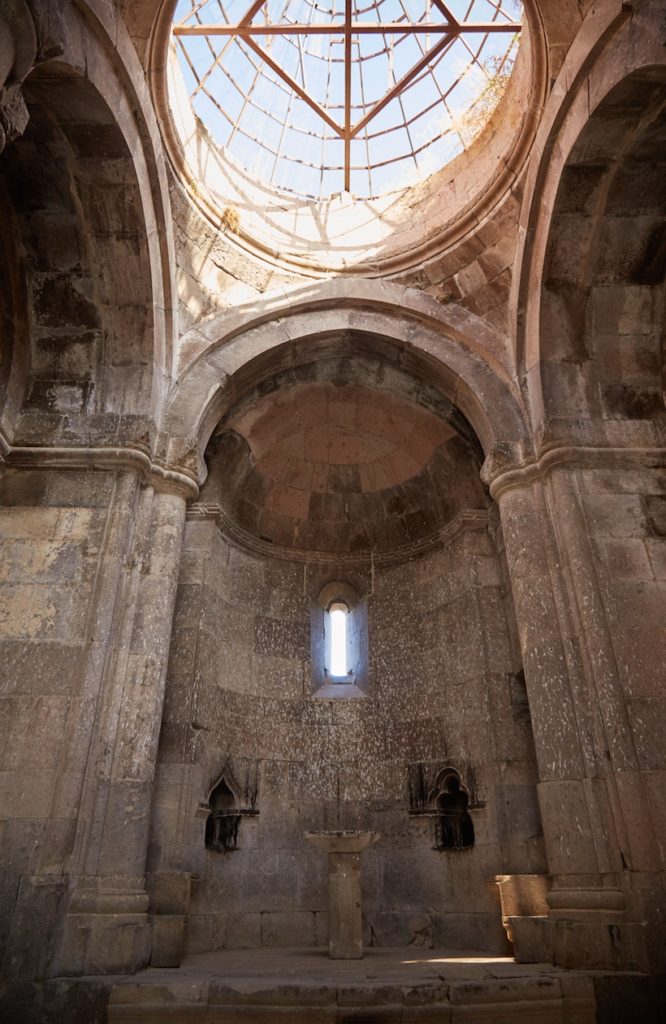
But the top highlight of Goshavank Monastery, in my opinion is the exquisite kachkar known as Aseghnagorts, situated outside Grigor Lusavorich Church.
It was carved by an artist named Pavgos in 1291. The mesmerizing cross-stone is both large and extremely detailed. One can stand in front of it for a long time and get lost in the details.
This was one of the most impressive kachkars I saw in all of Armenia, and it’s baffling to consider the level of both skill and concentration required to pull it off.



Inside Grigor Lusavorich church, take note of the intricate carvings and dimly lit corner chapels. The structure was built in 1231 and it likely replaced an even older building.
Goshavank Monastery also has another church named Surb Grigor (after Gregory the Illuminator) which even shares a similar interior design. The inside, however, is largely undecorated.



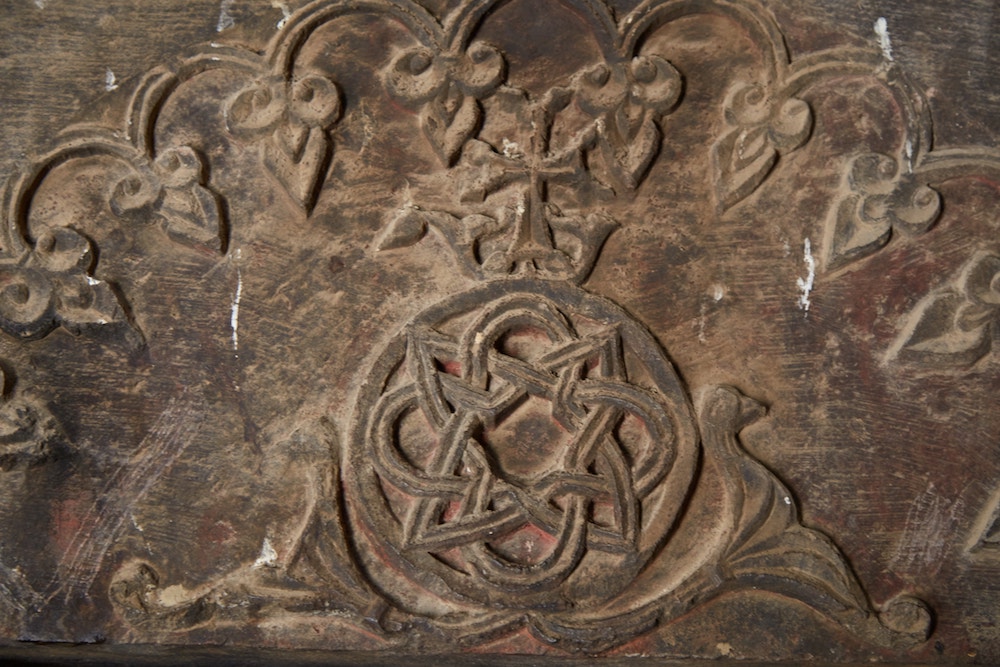

There’s still more to explore around the complex, including a few additional smaller chapels. Off to the side, meanwhile, is the former library, connected to the churches by a series of arches.

Back outside, take note of another small church atop a nearby hill. Supposedly, this spot is where Mkhitar Gosh preferred to live and write. And following his passing, devotees built a church in his honor. If time allows, you can even walk up there to get a closer look.

Haghartsin Monastery
Our next stop, Harghartsin Monastery, is arguably one of Armenia’s most beautiful. Hagharstin (‘Soaring Eagle’) was built throughout the 10th – 13th centuries. And recently, thanks to the aid of an Emirati sheik, it remains in remarkable condition today.
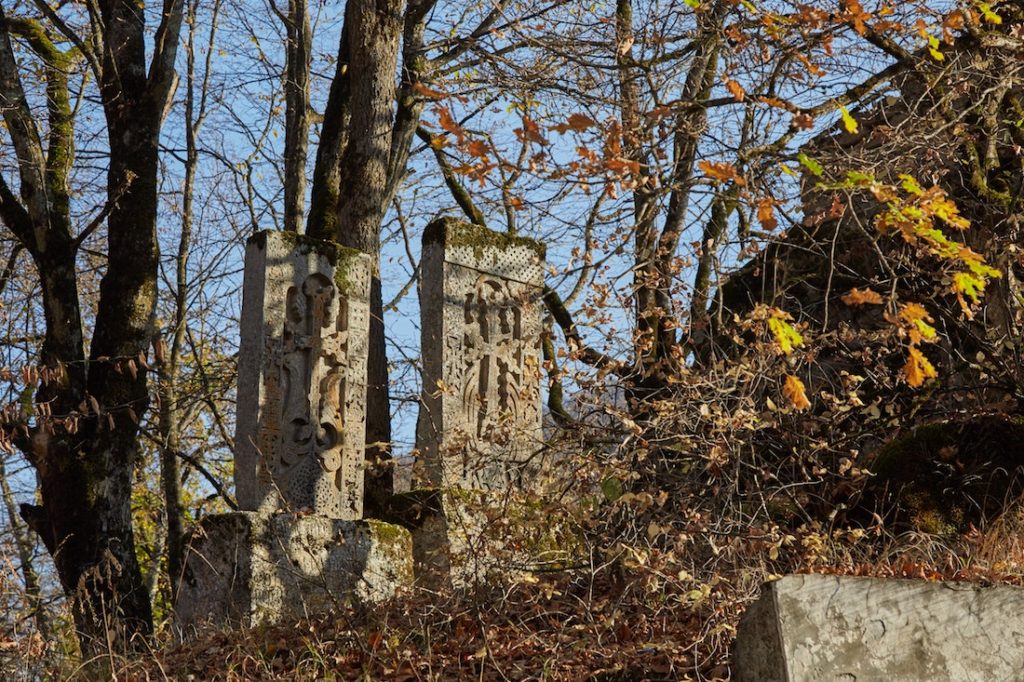
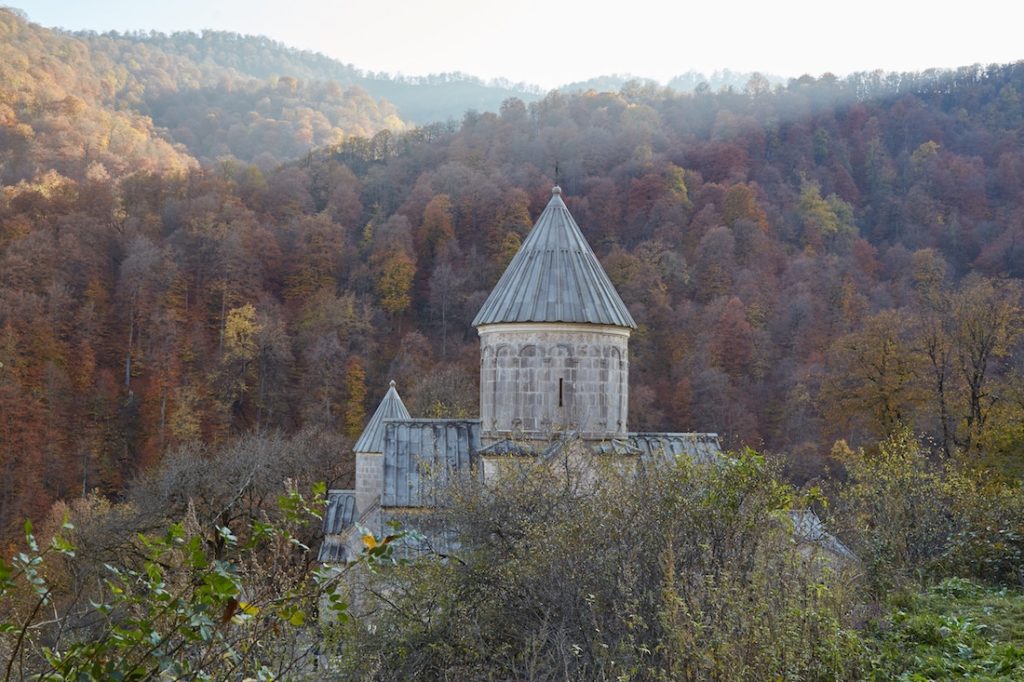
Walking up to Harghartsin, you’ll notice a few kachkar stones placed alongside the hill. And be sure to stop at the top to take in the views of the full complex.
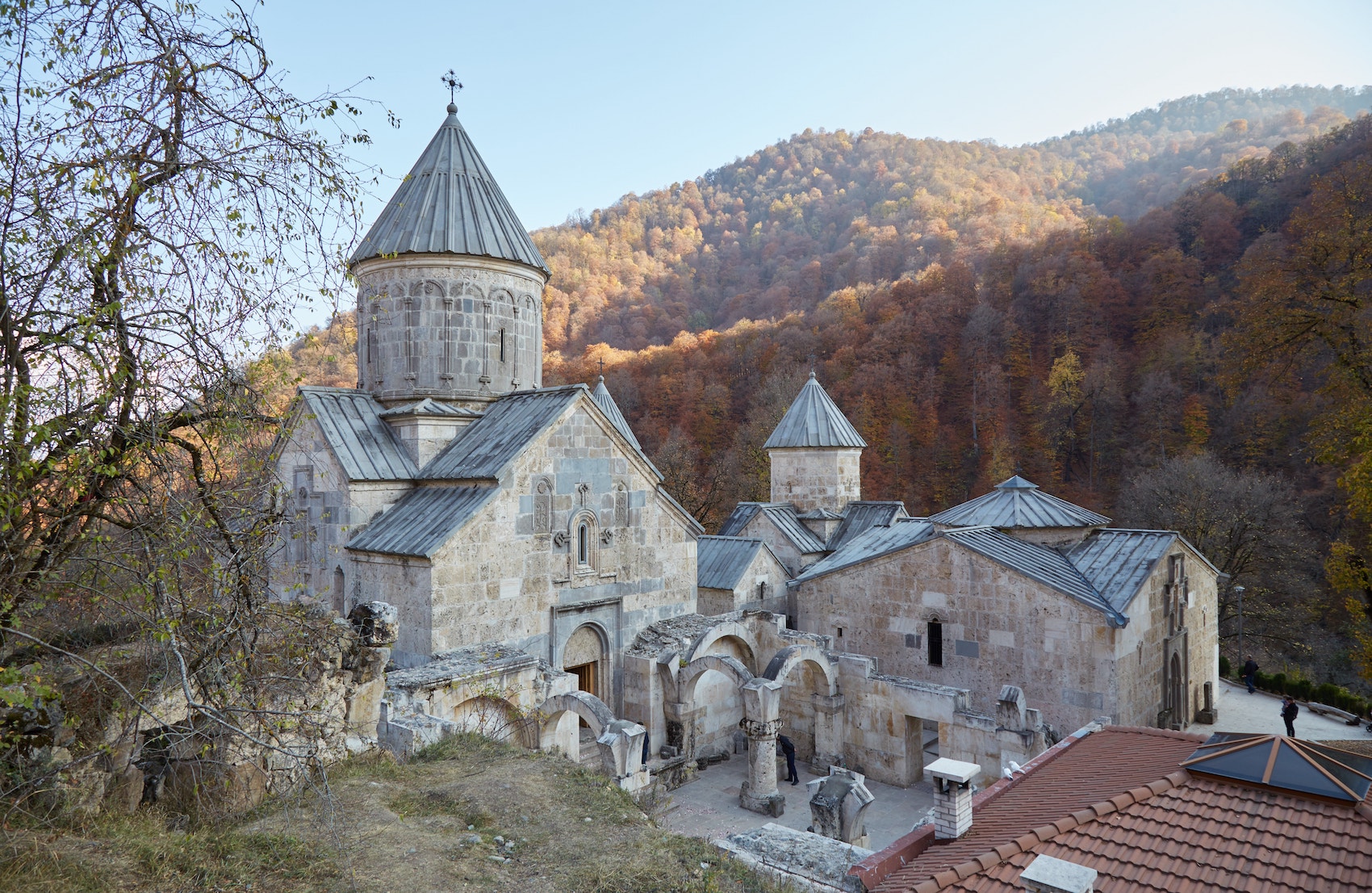
In front of the main church, St. Astvatsatsin, are the ruins of its gavit. The space is now a mostly empty courtyard with a few remaining columns and arches.
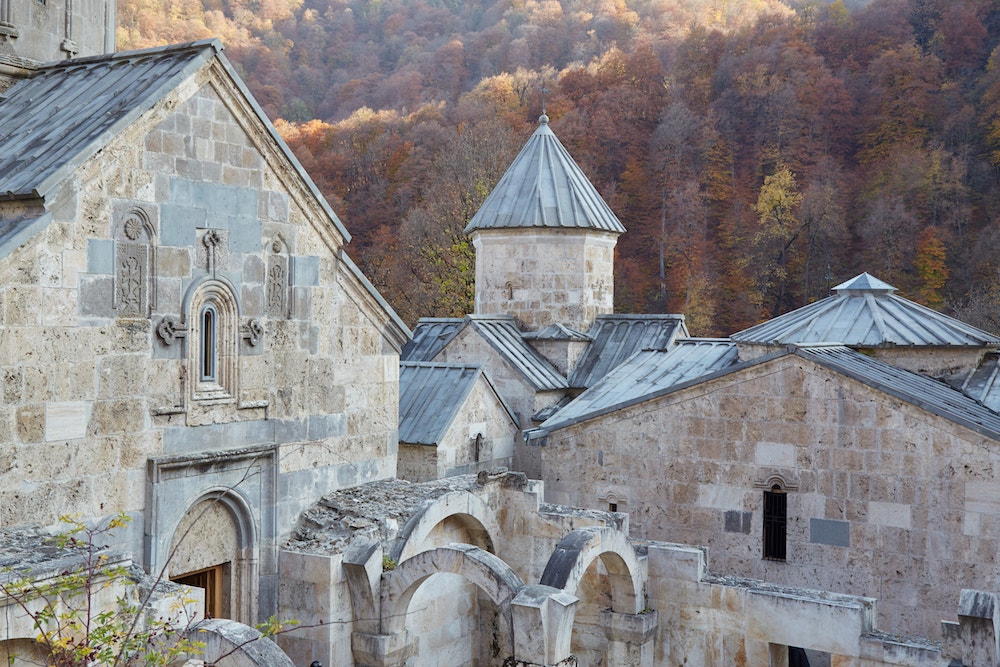
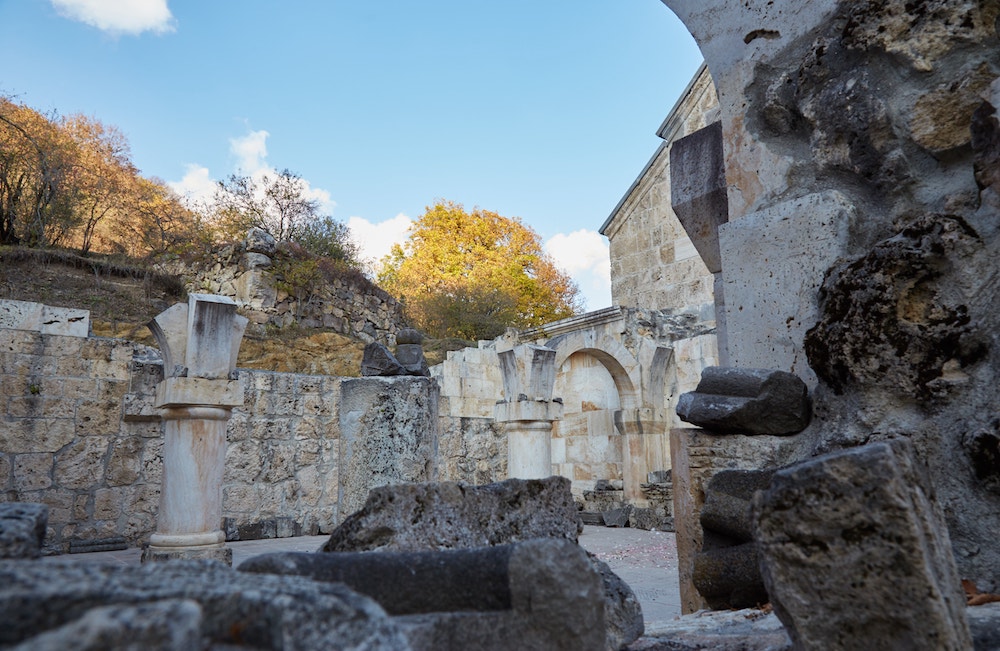


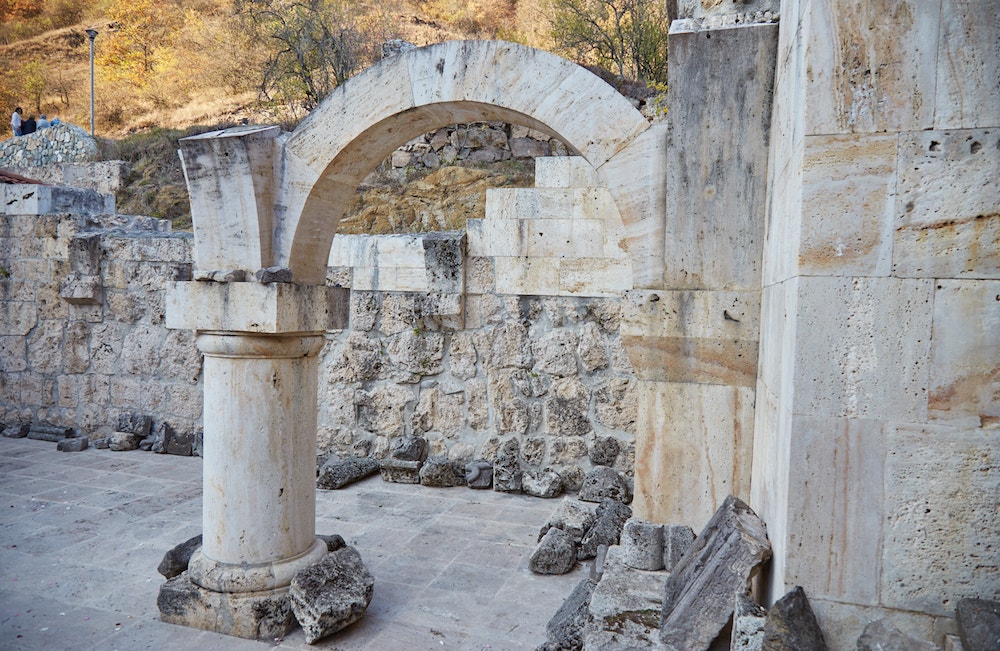


The second-most prominent church is that of St. Gregory, accessible via its gavit which remains in pristine condition. The church is possibly the oldest of the main structures, dating back to the 10th century.
The church features an octagonal dome supported by four large pillars, while various inscriptions and strange reliefs adorn the interior.



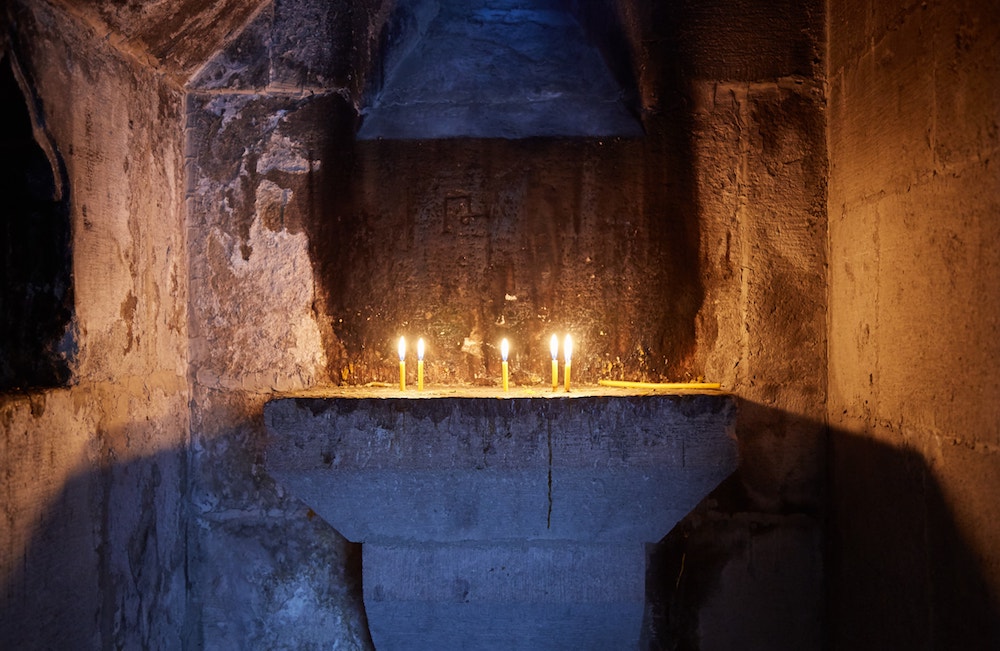
Other structures of note include St. Stepanos Church, built in 1244. And over to one side is a tomb in which members of the Bagratuni dynasty were buried, such as King Smbat and his nephew Gagik (who both built spectacular churches at the former capital of Ani).
Additionally, the tomb contains princes of the Kyrukian dynasty.
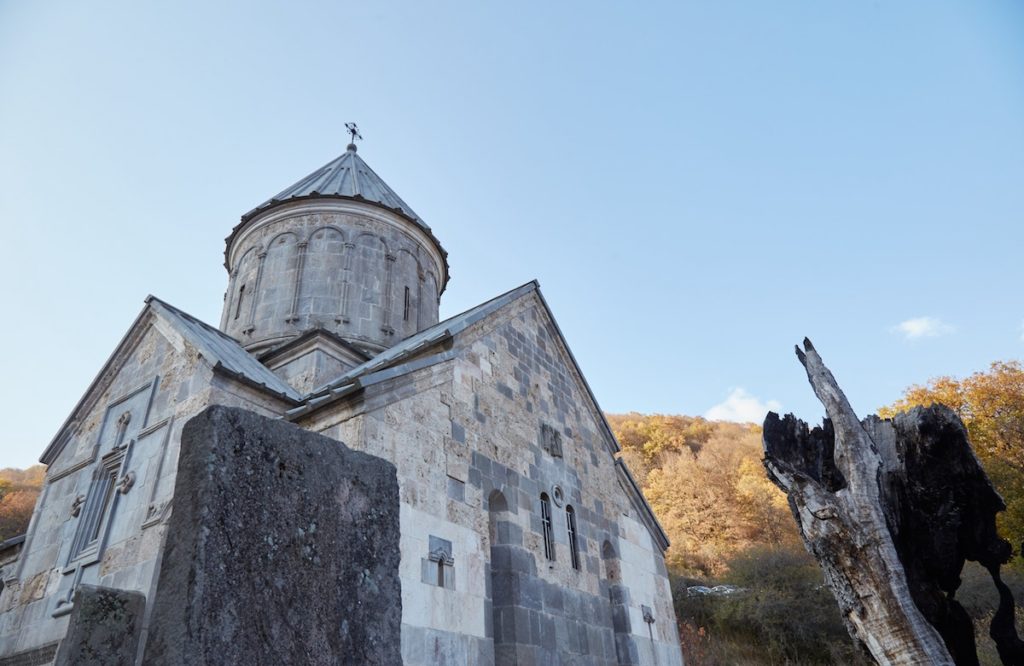
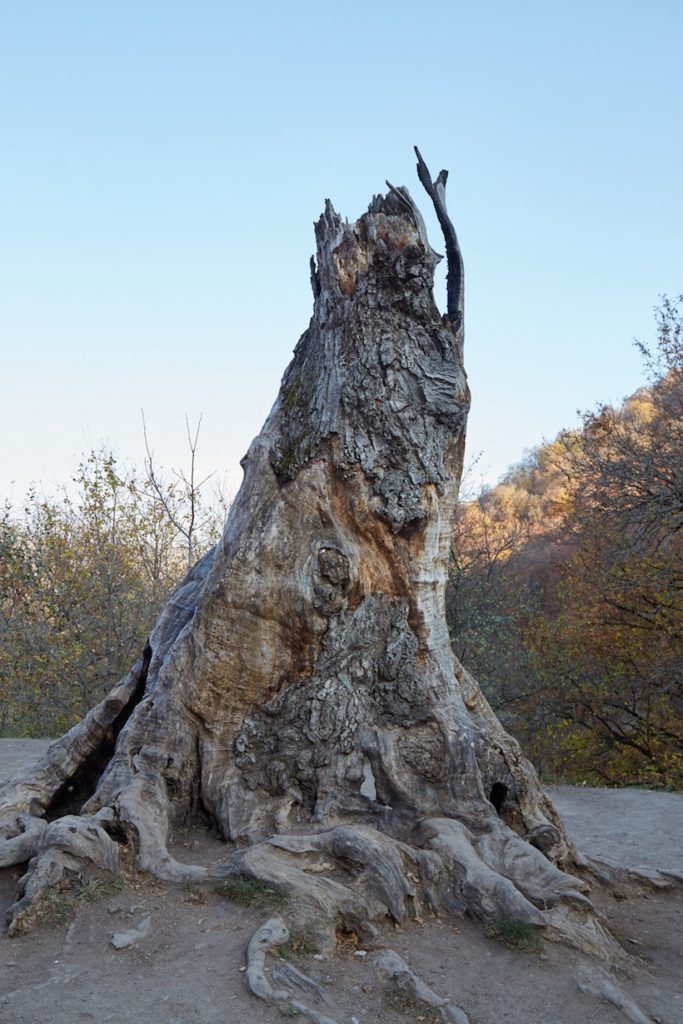
Out back, you’ll notice an old hollow tree trunk. The tree was once struck by lightning, and this is all that remains. During my visit, groups of locals were constantly posing in front of the tree while walking through the narrow hole in the side of the trunk – presumably as a good luck measure.
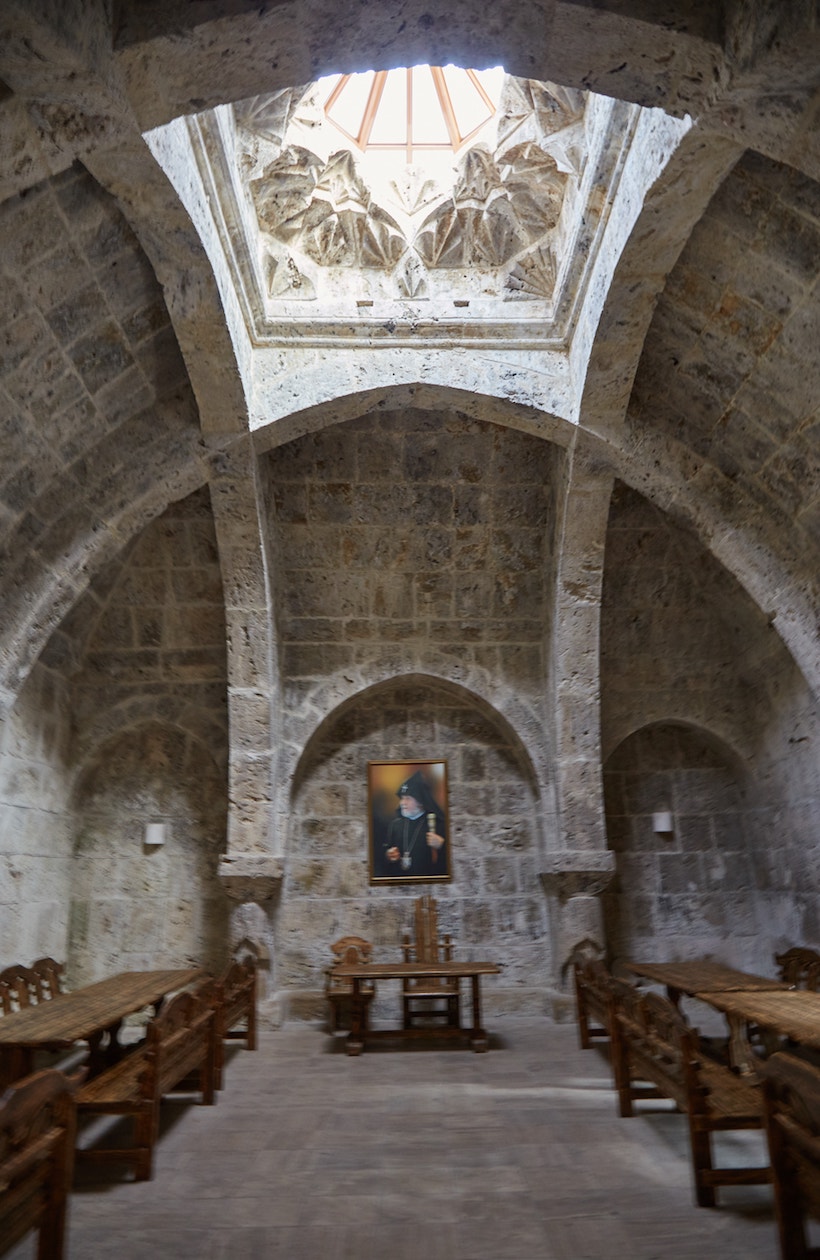

Back near the entrance, be sure to stop in the refectory. It was constructed in 1248 by an architect named Minas, who also constructed that of Haghpat in Alaverdi, now a UNESCO World Heritage Site.
During a 2011 visit, Sheikh Sultan III, ruler of UAE’s emirate of Sharjah, came to visit Armenia. He was impressed and moved by Haghartsin Monastery but was also sad to see it in its dilapidated state.
And so he decided to fund its restoration. Inside the refectory today, pictures on display show what Haghartsin, and also the refectory itself, looked like before Sheikh Sultan’s visit.
Old Dilijan (Tufenkian)
The Old Dilijan area is a small recreation of how Dilijan once looked in the 19th century. It was around this time that wealthy Armenian families began spending more time in Dilijan and began constructing summer houses in the area.
You’ll find several recreations of craftsmen’s workshops, and you can step inside to admire the art of the different creators. You’ll come across a woodcarver, silversmith, ceramist and even a baker.
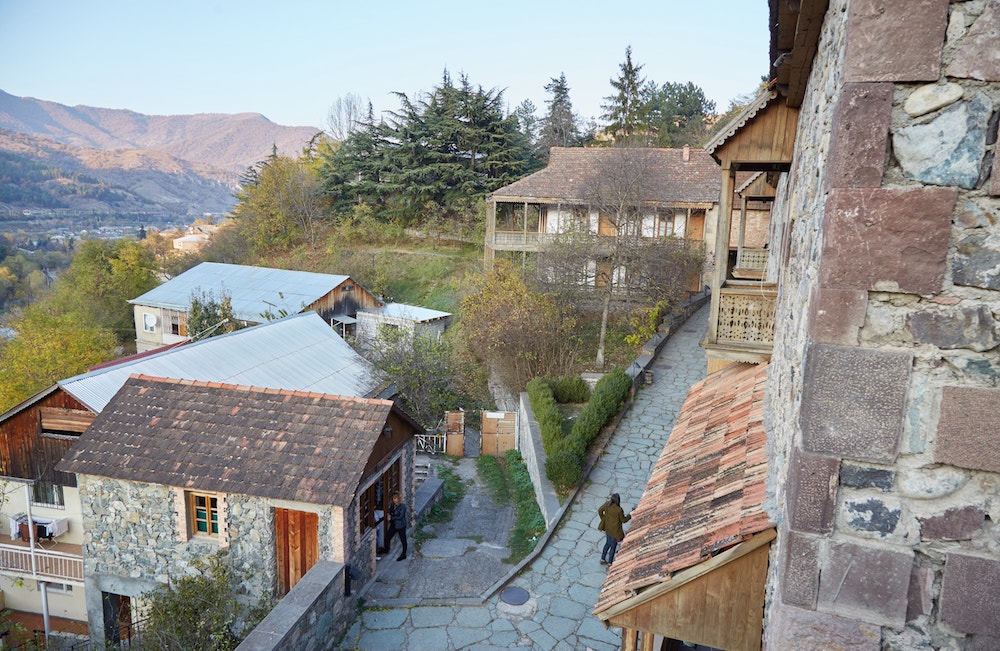

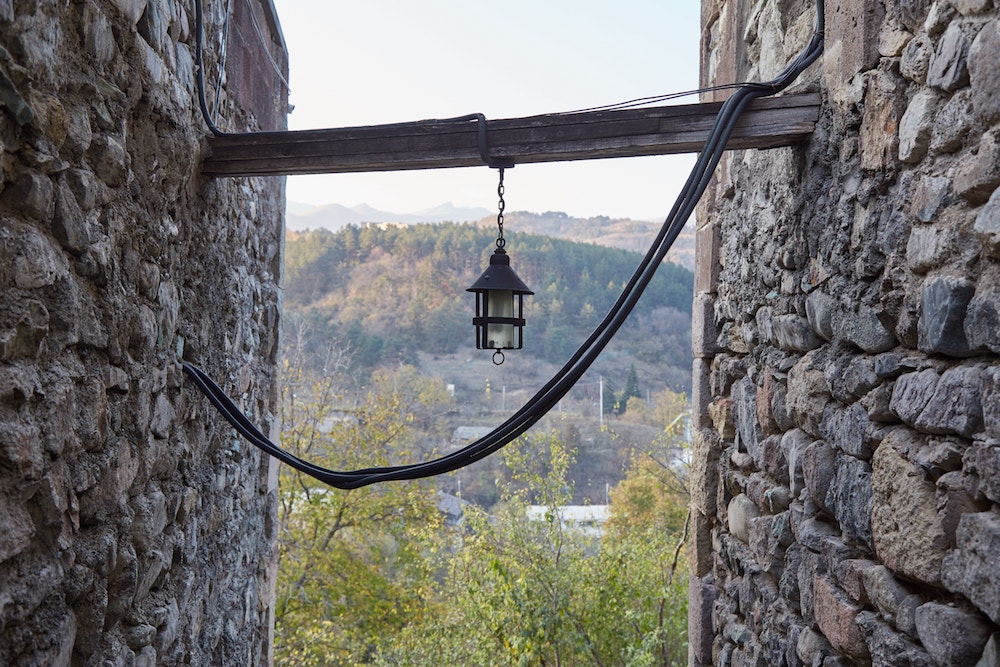

Don’t get too excited though, as the area basically just consists of a few buildings along one small street. It’s picturesque for sure, but only makes up a tiny fraction of the entire Dilijan area.
But if you want to soak up the Old Town vibes, the area even has some guesthouses. This also seems like a nice base for hiking excursions around the National Park.



Ironically, Dilijan’s historic district has the most modern-looking church I encountered in Armenia. Also at the upper level, don’t miss the breathtaking kachkar. Though made of wood, it’s almost as impressive as the one at Goshavank.
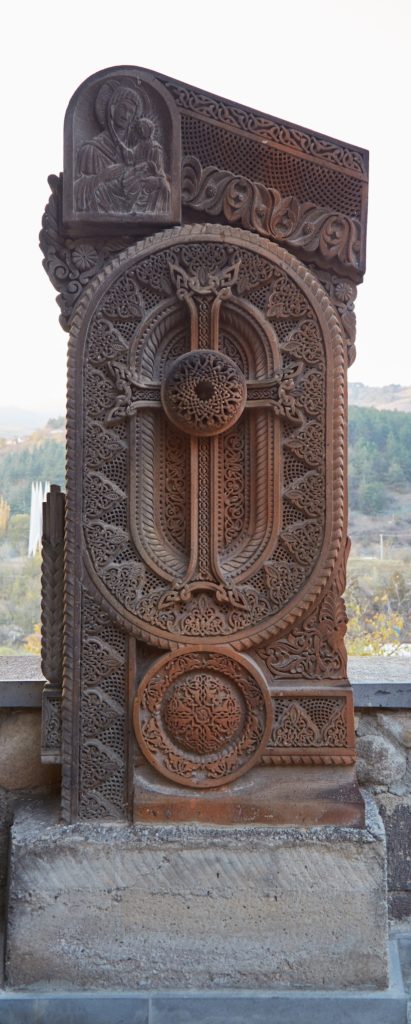

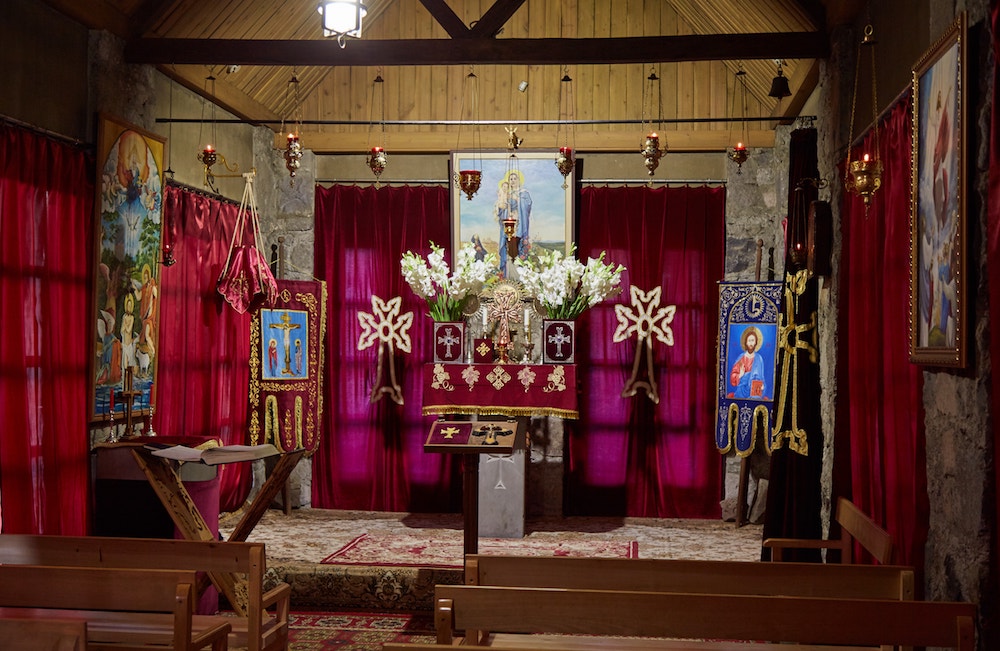
Additional Info
Lake Sevan and Dilijan are often combined as day tours which are offered by most Yerevan-based tour companies. I went on the tour listed above with One Way Tour, which I’d already used a few times before. The day tour only cost 8,000 AMD.
Overall, things went smoothly, and I felt we got enough time to explore the main monasteries. Furthermore, I was happy that we were even given a bit of time to hike on our own.
If you hope to visit independently, the marshrutkas leaving for Dilijan from Yerevan pass through Sevan on the way there. Supposedly, they leave frequently from outside the Medical University.
As mentioned above, I’d originally planned to visit Dilijan independently to hike in between some of the more minor monasteries. Additionally, I intended to find a private taxi driver to take me to Goshavank and Haghartsin (for around 8,000 AMD).
But when looking at the marshrutka timetable online, I saw that the final minibus from Dilijan to Yerevan departs at 16:00! While I may have been able to make it, the whole point of traveling independently, in my opinion, is to explore leisurely without worrying about the time. So in the end, I figured that I might as well take the tour, which would also save me money.
For those staying longer in Dilijan, there are plenty of accommodation options to choose from:
For whatever reason, accommodation prices in Yerevan are considerably higher than those of nearby Tbilisi. This is in spite of most other things, like food and transport, costing the same amount. If budget isn’t an issue for you, then you should base yourself in the city center (within the circle or just outside of it).
Yerevan makes a great base from which to explore many other parts of Armenia. If you’re doing an extended stay in the city and want to save some money, staying outside the center will be fine. Just make sure that you’re within close distance of a metro station.
I stayed at Glide Hostel which I’d highly recommend for budget travelers. I opted for the private room with a private bathroom, but they also have some shared bathroom and dorm options available.
The guesthouse is located about 5 minutes on foot from Baregamutyun Station, the northernmost metro station. But you can still walk to the city center in about 30 minutes if the weather is nice. The staff were friendly and helpful, and a tasty breakfast was provided each morning.
